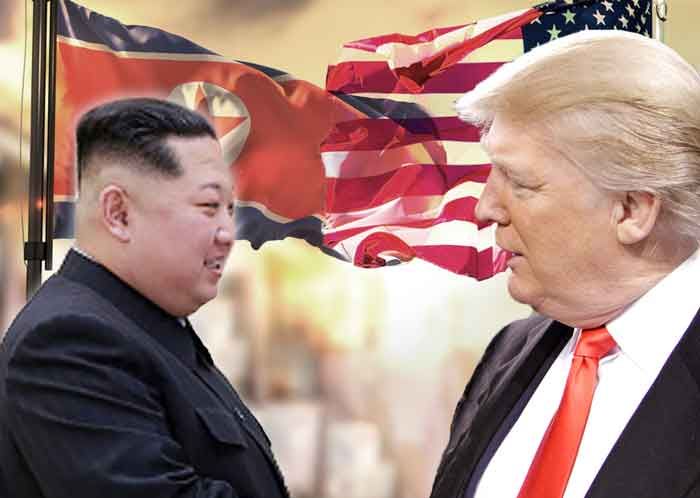Summit is back on again, says Trump
By Dan Drollette Jr | June 1, 2018

In another plot twist to the reality show that is this administration’s White House, President Trump announced this afternoon (Friday, June 1) that the North Korea summit is back on, says the front page of the New York Times. This is the same summit that he had canceled a week ago with North Korea’s leader last week. As the Times puts it, this is “the latest head-spinning twist in a nuclear edged diplomatic drama that has captivated and confused much of the world.” The newest diplomatic breakthrough came as the president welcomed North Korea’s former intelligence chief—a person whom Foreign Policy recently described in an article as a “master spy who helped to groom Kim, then survived his purges“— to a rare meeting at the White House.
It’s also a bit of a surprise, because a meeting just yesterday between Secretary of State Pompeo and this same official, Kim Yong Chol, ended a full two hours early, said the Washington Post, something which is not usually considered a promising sign.
“The on-again, off-again summit scheduling had all the earmarks of a television cliffhanger from a president who made a name for himself hosting a reality show on NBC for 14 years, only this time with deadly serious consequences. The session is again scheduled for June 12 in Singapore,” wrote this afternoon’s Times article announcing the president’s news.
Regardless of what happens at the summit—assuming it happens—the aftermath is likely to be just as important, wrote Ryan Hass of the Brookings Institution in the Bulletin yesterday. “Now is the time for policymakers to work methodically through what Washington will expect of Seoul, Tokyo, Beijing, and Moscow going forward; what conditions need to be met to introduce incentives into the negotiations; whether and when to increase or decrease external pressure on North Korea; how to minimize the threat from North Korea until denuclearization is achieved; and whether to seek to increase internal stress on the North Korea regime while talks are ongoing. While the pageantry and planning of summits is exciting, what follows likely will be what will have the most impact,” he wrote.
And this caution was echoed by Siegfried Hecker, former director of the Los Alamos weapons laboratory in New Mexico, who warned in a May 28 New York Times OpEd that despite administration spin of “rapid denuclearization,” the disarmament process on the Korean peninsula could take up to 15 years. “We’re talking about dozens of sites, hundreds of buildings, and thousands of people,” Hecker said Friday. The key to dismantling the sprawling atomic complex, begun six decades ago, Dr. Hecker added, “is to establish a different relationship with North Korea where its security rests on something other than nuclear weapons.”
Hecker is the only known American scientist to have seen in person North Korea’s facility for enriching uranium, a bomb fuel. And he has toured that nation’s secretive labyrinth of nuclear plants four times.
He and his colleagues at Stanford University’s Center for International Security and Cooperation had just issued a roadmap to denuclearization on the Korean peninsula, together with a history of disarmament efforts and a timetable, last week.
Publication Name: New York Times
To read what we're reading, click here
Together, we make the world safer.
The Bulletin elevates expert voices above the noise. But as an independent nonprofit organization, our operations depend on the support of readers like you. Help us continue to deliver quality journalism that holds leaders accountable. Your support of our work at any level is important. In return, we promise our coverage will be understandable, influential, vigilant, solution-oriented, and fair-minded. Together we can make a difference.
Topics: Uncategorized














